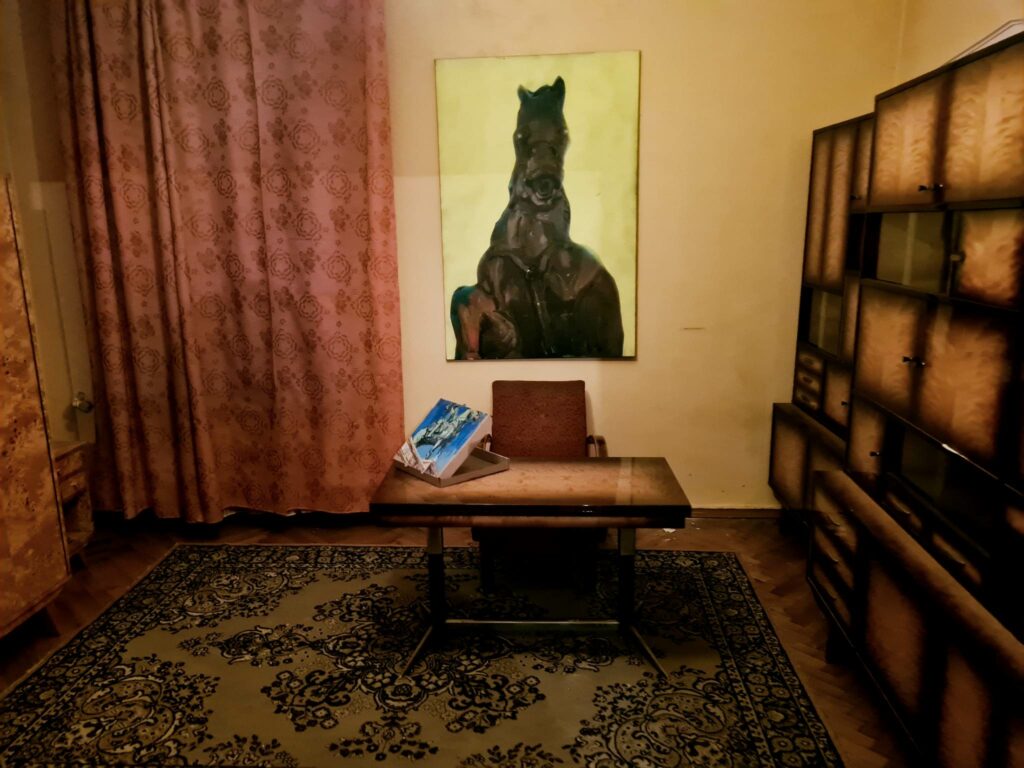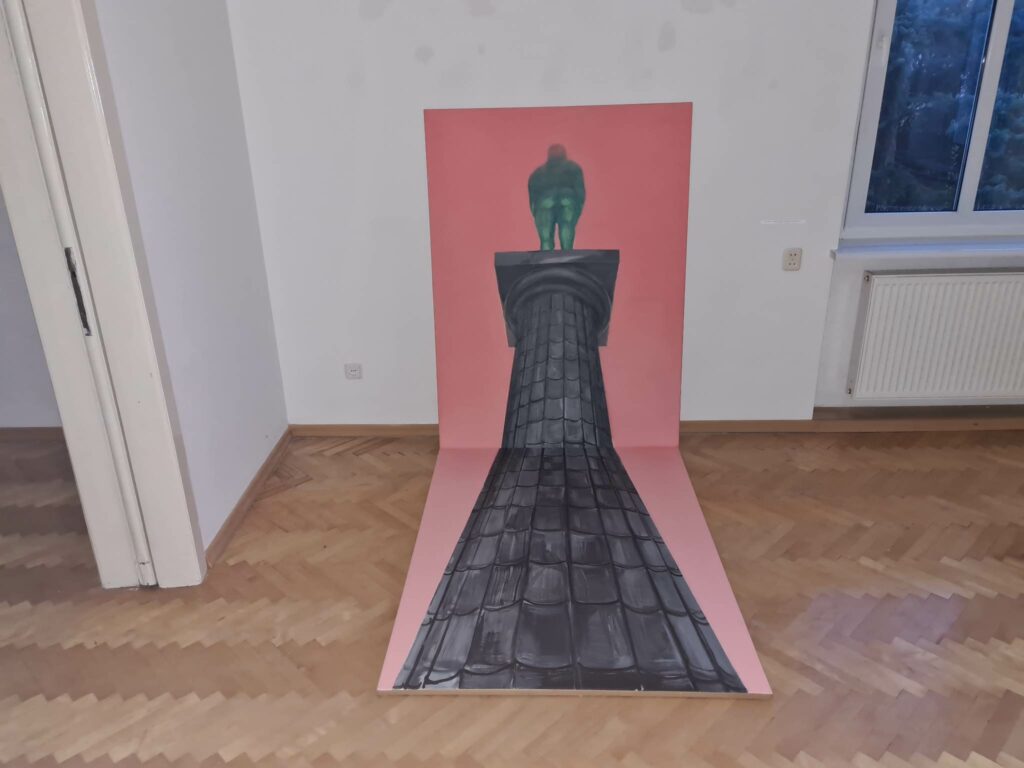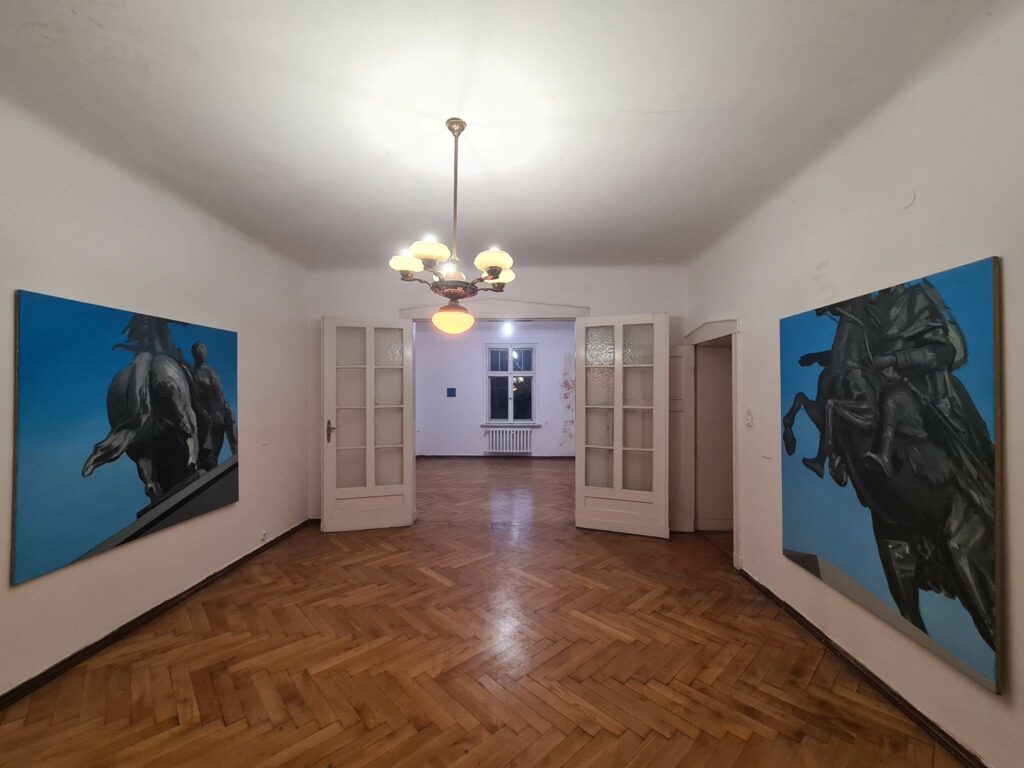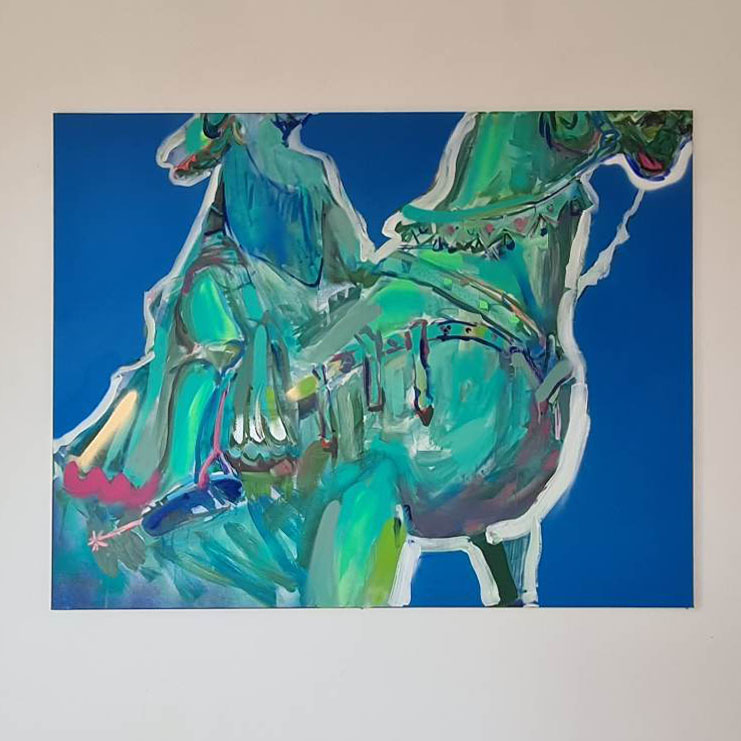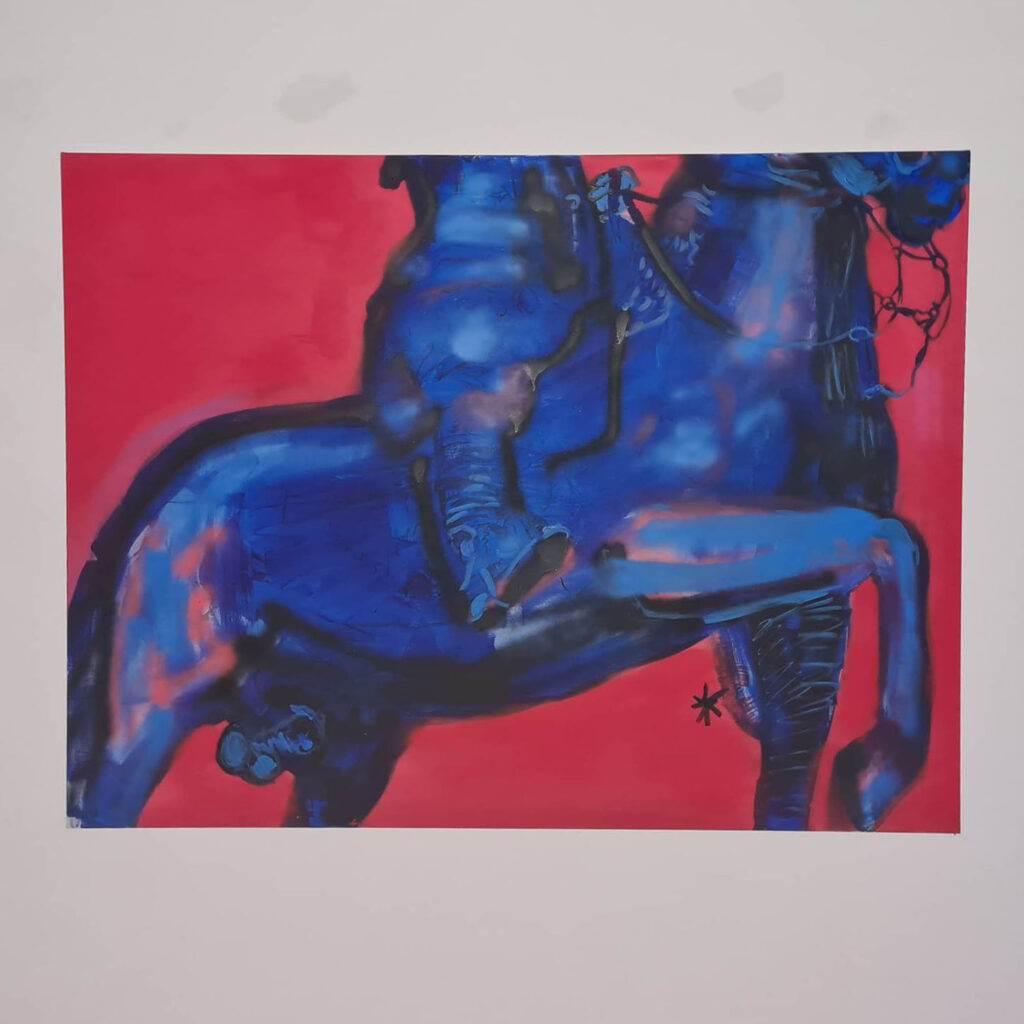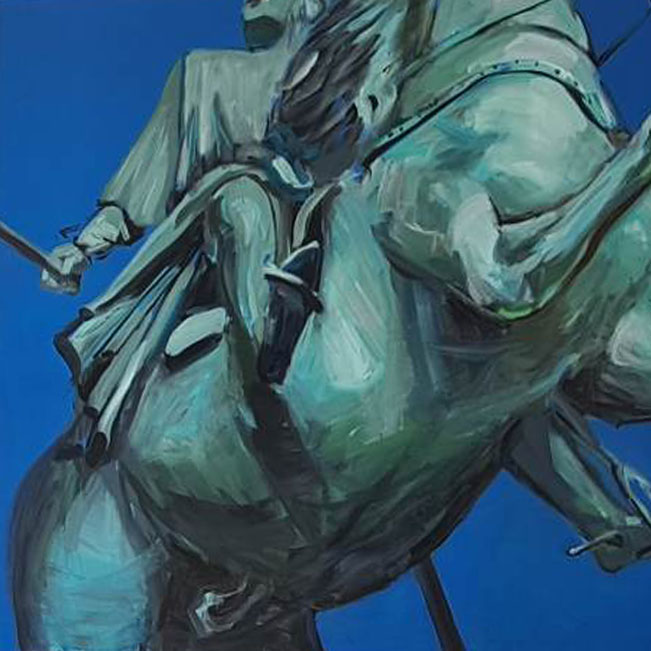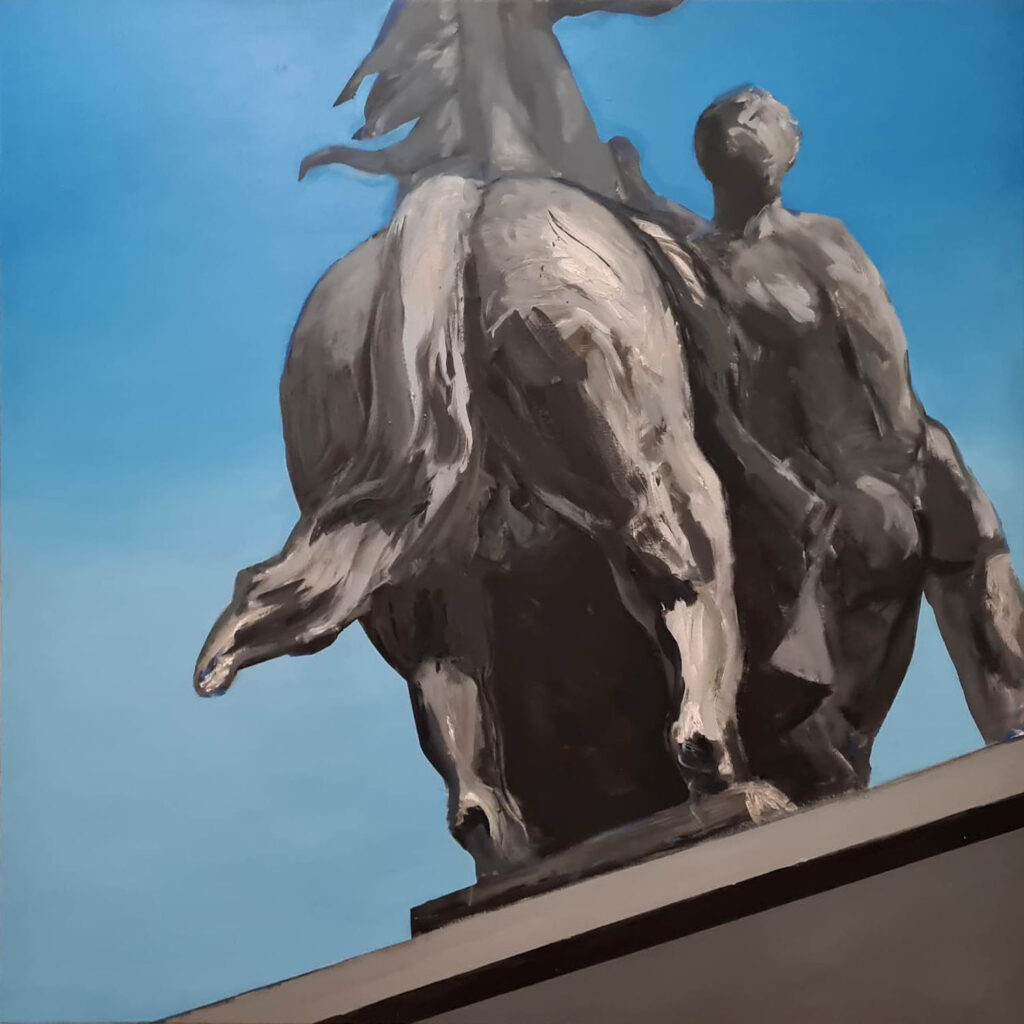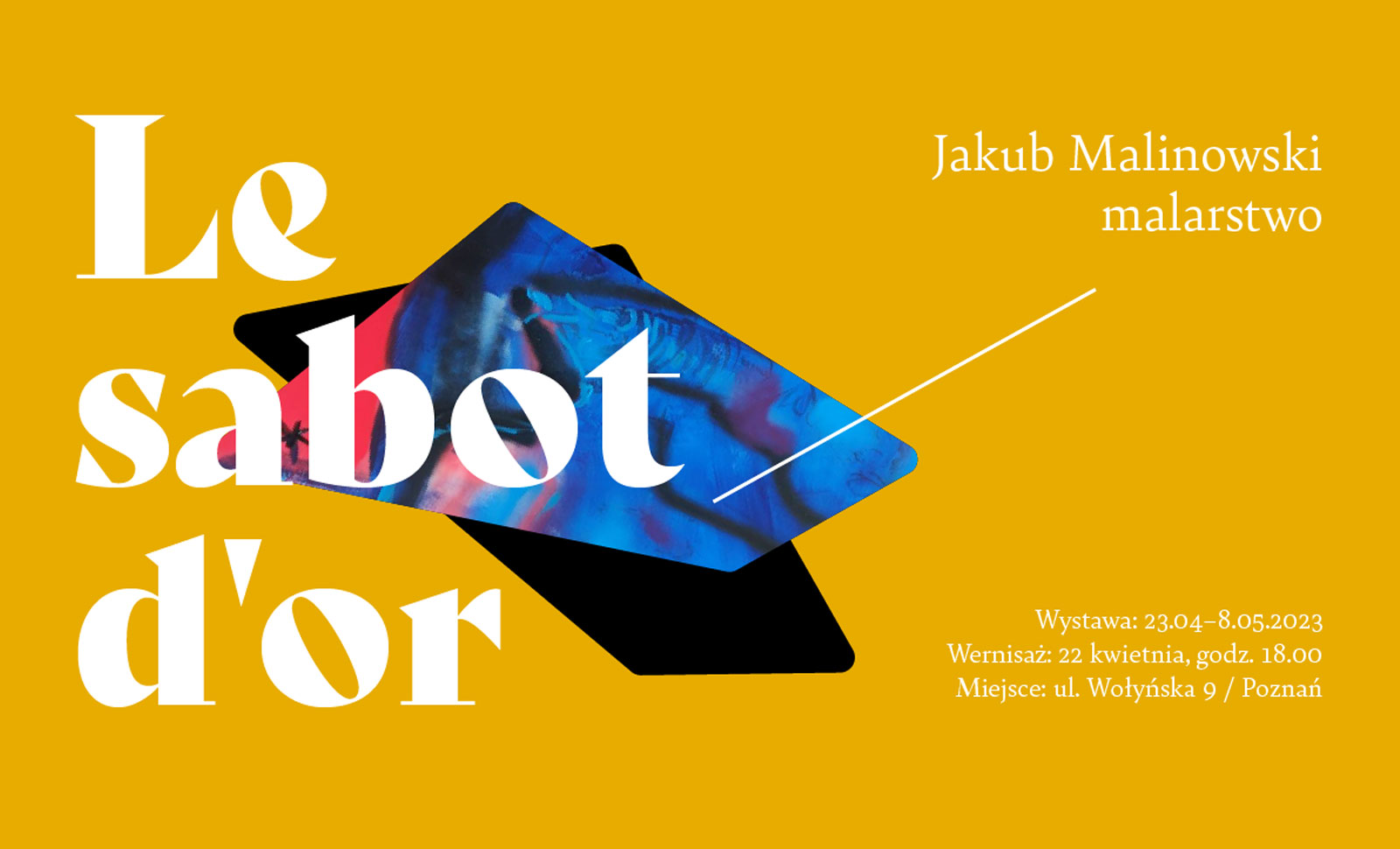An exhibition of paintings by Jakub Malinowski
“Le Sabot d’or” in the villa of art in Sołacz, Wołyńska 9.
Exhibition duration: April 23-May 8, 2023
7.05.2023 finissage of the exhibition from 4-9 pm.
The painting exhibition “Le Sabot d’or” by Jakub Malinowski, presented at Wołyńska 9, is an interesting example of referring to the idea of a counter-monument. As the painter himself emphasizes, his work on architectural motifs prompted him to become interested in monumental buildings that surround us in public space, which led him to reflect on the role of monuments. According to Malinowski, monuments are concentrated around power and the whole is devoted to its sublimation, and painting, as a medium, has always served these purposes. The artist’s interest in monumental sculpture, as a related field, became a starting point for him to create his works.
The idea of an anti-monument is to create a work of art that, unlike a traditional monument, does not aim to commemorate specific people, events or dates, but rather encourages reflection and discussion on certain social, political, historical or cultural issues.
The first ideas for anti-monuments appeared in the 1960s with the development of artistic movements such as pop art, conceptualism and performance, which questioned the traditional notion of art and its functions. In this context, the anti-monument became one of the ways of expressing criticism towards the existing social and political orders and an attempt to draw attention to social problems and inequalities.
One of the most famous anti-monuments is Ronald Reed’s “Homeless Monument”, which was unveiled in Glasgow, Scotland in 2001. The monument depicts a homeless man lying down and aims to draw attention to the problem of homelessness and social marginalization.
Another example of an anti-monument is the installation “Shield and Sword” at the Castle Square in Warsaw by Paweł Althamer, which was unveiled in 2002. The installation presents over 3,000 metal shields and swords that symbolize traditional Polish values and history, but at the same time question their current meaning and value in the context of contemporary social problems and challenges.
Meanwhile, Jakub Malinowski’s series of paintings entitled “Ex heroes” consists of paintings depicting equestrian statues whose heads have been cut off. Such cropping and cutting of views is not accidental, but is intended to depersonalize these equestrian statues and deconstruct the realistic formula of the equestrian monument. All the performances are based on one motif, but each of the paintings refers to a specific story, which translates into their form and the colors used.
Jakub Malinowski experiments with an unusual viewing perspective, cutting out scraps and clippings from his paintings, which gives the impression of accidentally capturing a given motif. Thus, the artist plays with a certain game, and his painting of monuments becomes a way to draw attention to the problems posed by the ideologies that the monuments represent.
The exhibition consisted of a dozen or so paintings of various sizes, made in oil on canvas. The themes of the paintings oscillate around history, animals and fantasy. They show e.g. equestrian statues, but presented in a highly stylized and unrealistic way. The paintings seem to have a life of their own, and the characters depicted in them are strongly abstracted, as if taken out of their original context.
The colors of the paintings are very intense and contrasting, mainly cold colors are used, such as shades of blue and green, but also warm colors, such as red, orange, yellow and pink, which give the images energy and dynamics.
The aesthetics of the paintings evokes distant associations with impressionist painting, but with stylized figures and an unreal landscape. The composition of the paintings is very diverse, which makes each of them different and original.
The visual impressions from the exhibition are very positive, the paintings are full of colors and energy, which attracts attention and evokes positive emotions despite the difficult subject. You can see that the artist tried hard to create something unique and original, which he certainly managed to achieve.
It is worth paying attention to the name of the exhibition – “Le Sabot d’or”, which is associated with the history of King Louis XIV of France and his reign, which was associated with the launch of a model administrative and bureaucratic system. Jakub Malinowski refers to this story to show how ideologies represented by monuments influence our everyday life. In this way, the artist becomes a critic and an apologist at the same time, and his exhibition is an interesting example of art that raises social and political issues that are important to us in an unconventional way.
